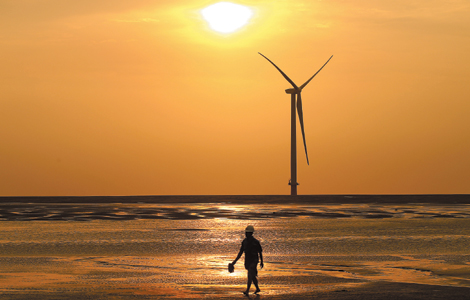China exploring ways to cut overcapacity
Updated: 2013-09-18 21:30
(Xinhua)
|
|||||||||||
BEIJING - China has this week ordered 58 companies, ranging from steel, coke and cement producers, to cut excess production capacity by the end of the year, in the latest attempt to ease overcapacity in bloated sectors.
This is the third batch of enterprises required by the Ministry of Industry and Information Technology to cut overcapacity by the end of 2013, following more than 1,400 companies in July and another 67 earlier this month.
The orders came as China struggles to digest production gluts from an investment boom and generous subsidies in the past few years that saw producers in "favored" sectors expand rapidly with little regard to real market demand.
The average utilization rate in oversupplied sectors such as steel is below 75 percent, far lower than the international average, and around 22 percent of production capacity in China's major industrial companies sat idle in the first half of the year.
"China's over-reliance on investment and foreign trade has fueled rapid growth in some sectors, and when global demand slides and domestic production cost rises, overcapacity inevitably surfaces and cannot be easily addressed," noted Zhang Yansheng, secretary general of the Academic Committee of the National Development and Reform Commission, China's top economic planner.
Chinese solar panel maker Suntech Power Holdings Co., Ltd, which in 2011 was the world's biggest seller of silicon-based photovoltaic modules and hailed by New York Times in 2009 as "the Sputnik of our day," was forced into bankruptcy by a worldwide production glut and heavy debt in May.
Against the backdrop of a slowing economy, China's new leadership has been at pains to balance production. Premier Li Keqiang has on many occasions vowed to curb blind expansion and improve capital efficiency, along with energy and resource use to restructure the economy.
More policies are in the pipeline. A plan to systematically address the issue is in the making.
According to Zheng Xinli, executive deputy director of China Center for International Economic Exchanges, the government is looking to boost domestic demand, encourage producers to go global, push mergers and acquisitions, as well as setting higher environment threshold to reduce overcapacity.
Even though the central government has been pushing for the elimination and closure of outdated capacity, analysts warn that the move will meet resistance from GDP-oriented local governments accustomed to chasing jobs and economic growth by investing in the often high-cost, low-tech capacities.
"The administrative orders are short-term cures, the key to a balanced economy is to allow the market play a larger role," urged Gary Liu, executive director of CEIBS Lujiazui Institute of International Finance in Shanghai.
In the absence of robust overseas demand, China needs to reform its income distribution system to absorb overcapacity, and make production costs more market-oriented, Liu suggested.
"Real demand and supply can guide resource distribution, and the job of the government is to eliminate policies that disturb market order and remove improper protection and subsidies," he said, adding he expects more detailed reform plans at the upcoming Third Plenary Session of the 18th Communist Party of China Central Committee in November.
Related Stories
Babaoshan Revolutionary Cemetery to increase capacity 2013-09-12 20:40
China builds massive-capacity nuclear generator 2013-08-24 23:27
Hebei province to cut steel capacity 2013-08-19 22:44
Hu says CPC must strengthen governance capacity 2012-11-08 10:47
China tops world in wind power, hydropower capacity 2012-12-09 22:10
19 industries to shed capacity 2013-07-27 00:21
Today's Top News
New US private spacecraft launched to ISS
Brazilian president postpones US visit over spying
Assad hails Russia's supportive stance on Syria
Rules to improve gov't transparency
Restart Six-Party Talks, says Wang
US urged to neutralise on Diaoyu
FDI keeps increasing in August
China asked to help end Syrian conflict
Hot Topics
Lunar probe , China growth forecasts, Emission rules get tougher, China seen through 'colored lens', International board,
Editor's Picks

|

|

|

|

|

|





